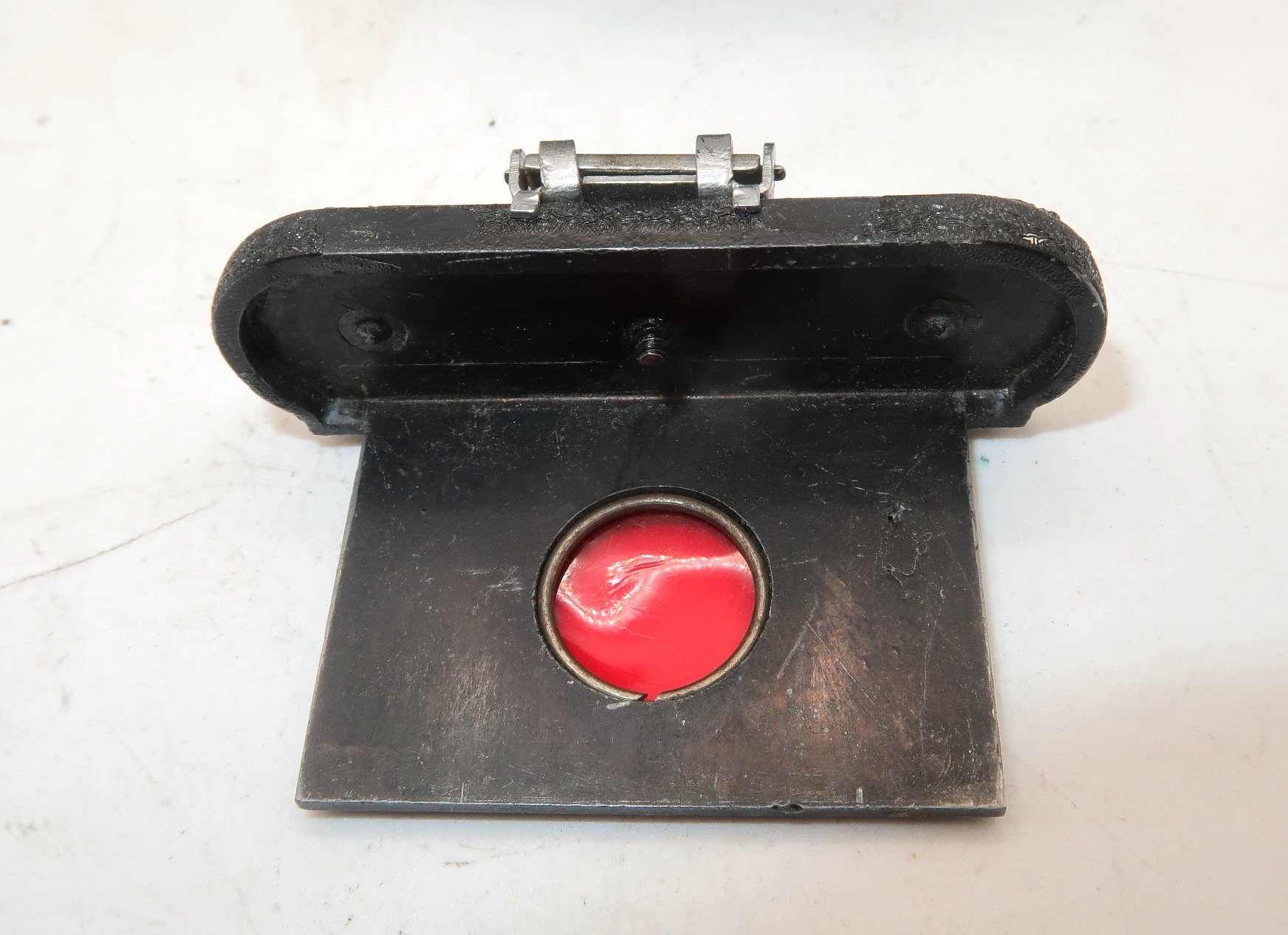My Merlin camera.
This week's posting is about a relatively uncommon camera with an odd and unusual look made by a tiny company in the UK. The camera is the Merlin, produced by United Optical Instruments in Southend-on-the-Sea, England.
I had seen the Merlin camera in books and online when looking at subminiature cameras. Still, it wasn't until my wife. I was on a trip to London a couple of years ago when I came across this odd bird at the Camera’s London stall on Portobello Road on a day that my wife and I were scheduled to go home.
Our flight wasn't until later in the afternoon, and I wanted to look for cameras before leaving, so I went there early in the morning to make it back in time to go to the airport. That's where I spotted the Merlin camera and a few other cameras I brought back to the States with me.
What caught my eye about the Merlin camera is the very odd shape of the camera. It has a wide part of the body, then narrows down, but the lens area flares out again, and the winding knob is on the bottom of the camera. You need to display the camera on the side unless you rest the camera on something due to the winding knob on the bottom of the camera. It just doesn't sit evenly on a flat surface.
The Company:
United Optical Instruments is only known to have made two different cameras, and neither was very popular. One of the cameras they manufactured was the Jupiter camera, a simple plastic camera with an Art Deco faceplate that took 127-size film. The only controls on the camera were two shutter speeds, the winding mechanism, and the shutter release. The other camera they manufactured was the subminiature Merlin camera.
ERAC Camera
I can find little information about United Optical Instruments, which is located in a resort town on the Thames Estuary in Essex, southeast England, about 68 kilometers from London. However, I did find that the company was associated with the Erac Selling Company.
The Erac Selling Co. manufactured and patented two slightly different, oddly shaped cameras that resembled a pistol made from thermoplastic material. One of the items was the Erac Automatic Pistol Camera, and the other was the Erac Mercury 1. These pistol-shaped cameras housed a Merlin camera without the viewfinder inside the pistol's body. When you pulled the pistol trigger, the camera took the photo.
According to the information I found online, the Erac is described and illustrated in a patent issued to Harry Steward of Southend-on-Sea in 1931. The early version uses a different type of film advance, and the Merlin doesn't seem to be in this version.
Harry Steward and Harry Covill were issued an improved patent in 1937. The second camera's patent described it as a pistol-shaped device. The patent drawings show it to resemble a Merlin camera inside, but there is no mention of Erac.
Since the Merlin camera is inside the Erac Pistol camera, they patented a camera without the Merlin inside. Still, they found it too difficult to make it work. A few years later, they decided to put the Merlin camera inside the camera without the viewfinder.
The Camera:
As you can see in the photos, the camera is very small. It's only 2" wide, 2" deep, and 2" tall with finder up and 1.5" when it's down, and it only weighs 3.9 oz. The camera is made from cast metal and painted with a crackle finish, as the exterior has a rough surface. I can see areas where it's either chipped off or some flaked off. My Merlin camera is black, but they also have blue, green, and red cameras.










The Merlin took a special film of only 20mm rolls with a negative size of 18x18mm. It came on paperback rolls similar to the small "hit" style cameras, and to load the camera, the top of the camera, which is attached to the back, slides off, exposing the film chamber. Put in the roll of film, bring it over to the take-up spool, slide the top back on, and advance the roll to the first frame. The winding knob is on the bottom of the camera, as I mentioned earlier.
Another slight issue is that the top of the body doesn't lock, so if the camera falls, the top can slide off, exposing the film. Unfortunately, my camera doesn't have any original fill spools, only the blank areas where the film goes.
The bottom of the Merlin camera.
There is only one shutter speed, and the shutter release is on the bottom of the camera along with the film advance knob. The only item on the top of the camera is the fold-down viewfinder. The lens has no focus as it's a meniscus-style lens.
Conclusion:
Since I didn't have the film for this camera, I couldn't take it out for a walk through the neighborhood to take photos and see how it did. That's OK. I can use other cameras to do that.
I really like having this small camera in my collection, and now I want to find a Jupiter or Erac camera to add to it.
Thank you for taking a few minutes from your day to read about this wonderful camera made almost 100 years ago by a very small company in England. It has a nice place in my collection and hopefully inspires you to find one for it, too.
I'd love to hear from you if you have questions, comments, or concerns about this or any of the cameras I've written about.
Until next week, please be safe.










